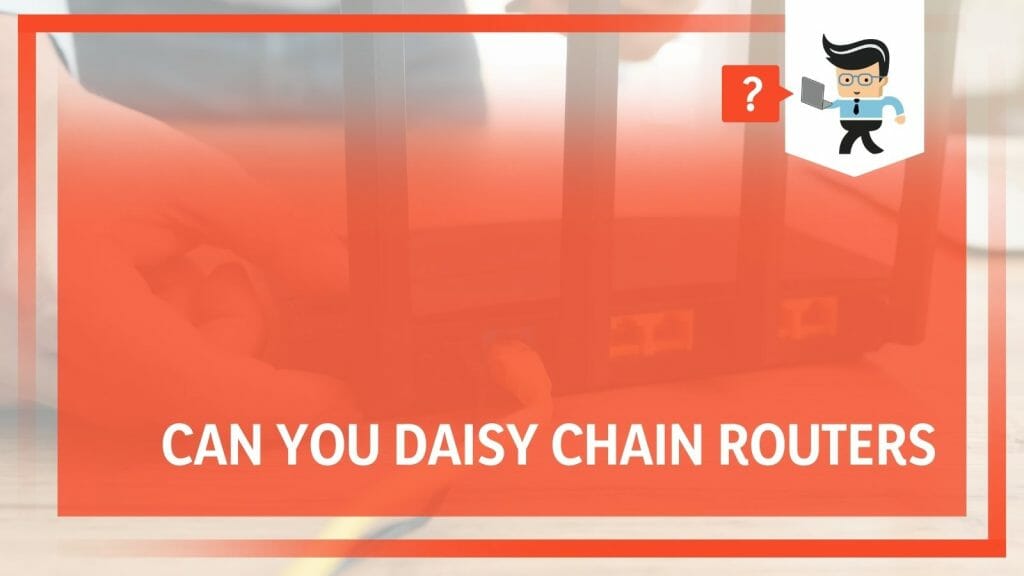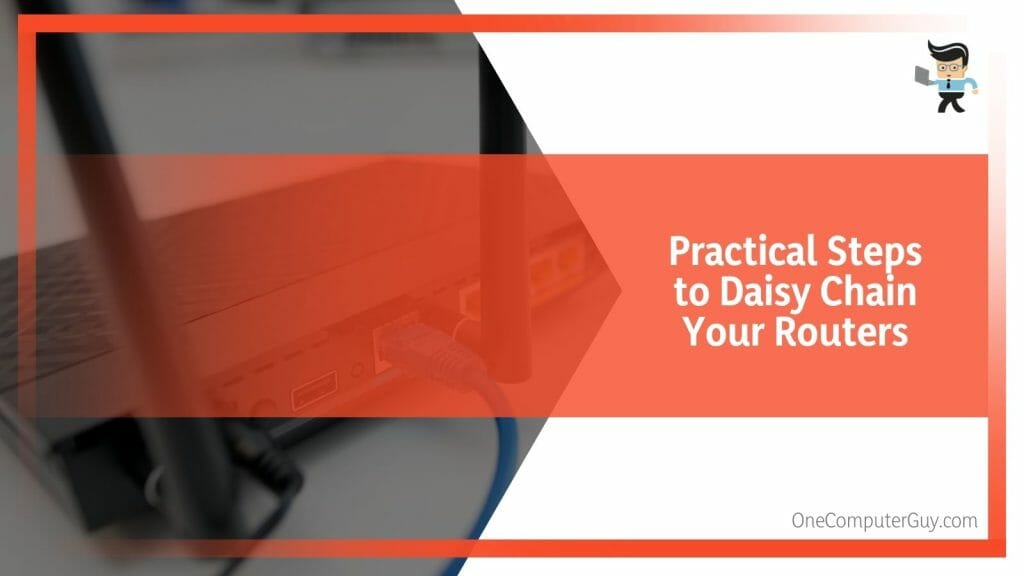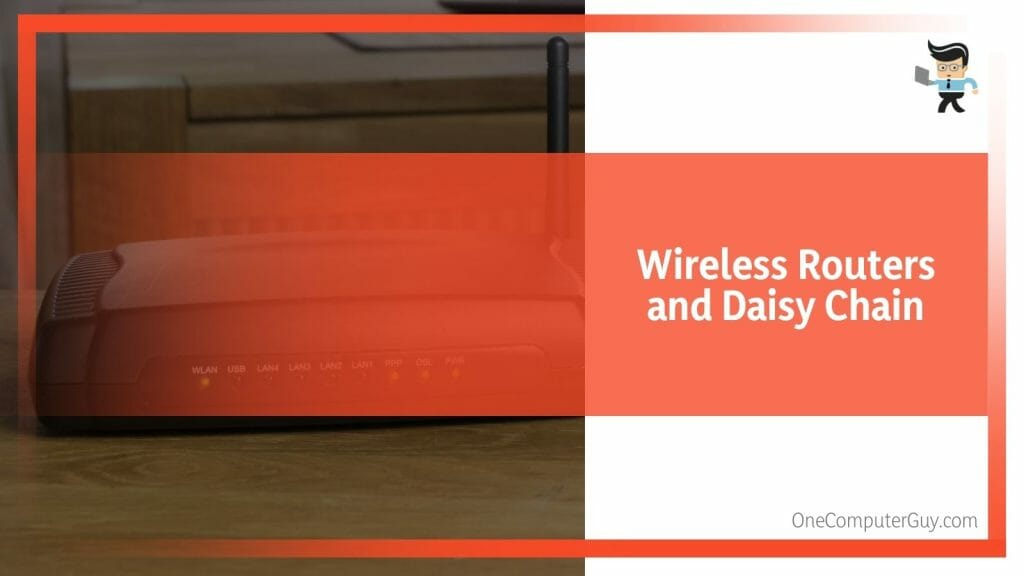Can you daisy chain routers? This question might seem confusing, but if you’ve ever struggled with limited Wi-Fi coverage or slow internet speeds, you’ll appreciate the magic behind daisy chain routers.
Our guide aims to unravel the issues with daisy chain routing PCB, presenting an elegant, user-friendly solution for linking your wireless routers and achieving seamless daisy chain WiFi throughout your space.
By the end of our exploration, you’ll be amazed at how simple it is to turn issues with the daisy chain topology into a thing of the past.
Contents
- How to Correctly Daisy Chain Routers? Optimal Approaches
- – The Technicality Behind Daisy Chaining Routers
- – Router Chain Langchain: A Comparative Analysis
- – Practical Steps to Daisy Chain Your Routers
- – Maximizing Internet Speed and Coverage with Daisy-Chained Routers
- – Wireless Routers and Daisy Chain: Achieving Optimal Wi-Fi Coverage
- – The Role of Daisy Chain Routing PCB in Network Configuration
- – Myths and Misconceptions Around Daisy Chaining Routers
- Conclusion
How to Correctly Daisy Chain Routers? Optimal Approaches
You can correctly daisy chain routers by connecting the primary router to your internet source. Next, adjust the secondary router’s IP to avoid conflict, disable its DHCP, and connect it to the primary router using an Ethernet cable. Configure wireless settings, and you’re all set!
This question happens more often than you might think, especially when people struggle with poor internet coverage and slow speeds. In a world where our reliance on the internet is continuously growing, mastering the art of daisy chaining routers can be your safe choice.
Daisy chaining routers involves connecting two or more routers to increase the range of your Wi-Fi network. But how do you do this, and what other issues exist? Let’s start by addressing a common misconception: router chain langchain.
This is often confused with daisy chaining, but the two fundamentally differ. While daisy chaining involves a linear sequence of routers, each connected to the next, router chain langchain refers to a more complex network topology, where multiple routers are interconnected in a chain-like arrangement but have numerous connections to other nodes.
The langchain approach requires advanced networking skills and is usually implemented in larger, more complex networks.
Now, let’s talk about the relevance of daisy chain in computer architecture. This refers to the design pattern where multiple devices, including routers, are linked together in a sequence or ring. Daisy chaining simplifies bus cables and enhances fault tolerance, leading to more efficient and reliable networks.
To set up a daisy chain of routers, you must first connect your primary router to your internet source. This is your main point of access to your Wi-Fi network. Your secondary router (or routers, depending on the extent of the network you want to create) is then configured to operate in ‘bridge’ or ‘daisy chain access points‘ mode and connected to your primary router. This extends your network’s reach effectively, increasing coverage and boosting internet speed.
Remember, successfully daisy chaining routers involves careful configuration to avoid IP conflicts and to ensure optimal network performance. With patience and technical know-how, you can maximize your internet speed and coverage, creating a Wi-Fi network that meets all your needs.
– The Technicality Behind Daisy Chaining Routers
Daisy chaining routers isn’t as complicated as it might sound, but it does require a good understanding of basic network setup and router configuration. In essence, daisy chaining involves connecting multiple routers in sequence to expand the coverage of a network.
This is what it means:
- The first primary router connects directly to the internet source (usually a modem). This device handles DHCP (Dynamic Host Configuration Protocol), which assigns IP addresses to devices on your network.
- The second router (or any subsequent routers) is connected to the primary router via an Ethernet cable. These secondary routers must be configured to operate in ‘access point’ or ‘bridge’ mode, extending the Wi-Fi signal rather than creating a new network. This involves disabling their DHCP server to avoid IP address conflicts.
When correctly set up, devices can seamlessly switch between routers as they move around the coverage area, maintaining a strong and stable internet connection.
– Router Chain Langchain: A Comparative Analysis
Router chain langchain, despite the similar terminology, is a different concept from daisy chaining routers. It refers to a more complex network topology, where multiple routers are interconnected in sequence and with various connections to other nodes. This setup is often seen in larger, more complex networks such as business environments or large homes.
Here are the differences:
- Unlike a daisy chain, where the failure of one router can interrupt the connection for all routers down the line, a langchain setup is more resilient. Even if one router fails, others can still communicate through alternate paths.
- However, a langchain setup requires more careful configuration to avoid issues like routing loops, where data keeps circulating on the network without reaching its destination.
- Additionally, the increased complexity of a langchain network means it requires more resources to manage and maintain.
– Practical Steps to Daisy Chain Your Routers
Daisy chaining routers might sound daunting, but you can do it with patience and a basic understanding of router configurations. Here are some steps to guide you:
- Connect the primary router to the internet source (your modem).
- Adjust the secondary router’s IP address to match the primary router’s, but change the final digit.
- Disable DHCP on the secondary router.
- Connect the secondary unit to the primary one using an Ethernet cable (from any numbered port on the primary to the ‘Internet’ port on the secondary).
- Configure the wireless settings on the secondary router to match the primary router’s.
If these steps are followed correctly, you can establish a stable, daisy-chained router network that significantly extends your internet coverage.
– Maximizing Internet Speed and Coverage with Daisy-Chained Routers
Harnessing the power of daisy-chaining routers can significantly enhance your internet connection’s speed and coverage. It’s all about effectively positioning and configuring your routers to ensure the most efficient network possible.
Follow these basic principles:
- You can strategically place your routers in different parts of your home or office to broaden the Wi-Fi coverage. The secondary routers are extenders of your primary router’s network, effectively casting a wider ‘net’ of Wi-Fi coverage.
- Daisy chaining can also optimize your internet speed. By connecting multiple devices to different routers rather than all to a single one, you help reduce bandwidth congestion. This can result in faster internet speeds across all your connected devices.
Remember that daisy chaining isn’t a silver bullet for all Wi-Fi issues. The quality of your connection will still largely depend on your Service Provider (ISP) and the speed of the internet plan you’re subscribed to.
– Wireless Routers and Daisy Chain: Achieving Optimal Wi-Fi Coverage
Wireless routers are integral to a daisy chain setup, serving as the key components that extend your Wi-Fi coverage. Here’s how to maximize the benefits of daisy-chaining wireless routers:
- Position your primary router close to your internet source and central to where you’ll frequently use the Wi-Fi.
- Place the secondary routers at the edges of the primary router’s coverage to extend the network range.
- Ensure there’s some overlap between the coverage areas of each router to avoid ‘dead zones’.
- Use each router’s identical SSID and password to create a seamless Wi-Fi network where devices can automatically connect to the strongest signal.
– The Role of Daisy Chain Routing PCB in Network Configuration
The Printed Circuit Board (PCB) is the heart of any electronic device, routers included. The daisy chain routing PCB refers to interconnecting devices sequentially on the circuit board.
Here’s the meaning:
- For routers, this design allows for more efficient communication between components, potentially leading to better overall device performance.
- In a broader sense, the concept of daisy chain routing PCB can also apply to connecting multiple routers in a network. Each router acts as a link in the chain, with data flowing from one device to the next.
- This setup is instrumental in more extensive networks. It simplifies adding or removing routers as your network needs change. You can add more routers to the ‘chain’ to increase coverage or remove routers as needed without disrupting the overall network connectivity.
In conclusion, daisy chaining routers is a versatile method to extend your internet coverage and improve speed. It’s an adaptable solution that can suit various network needs, from small homes to large businesses.
– Myths and Misconceptions Around Daisy Chaining Routers
Like any technical endeavor, daisy-chaining routers are not immune to misconceptions and myths. These misconceptions often stem from misunderstanding the nature of networking and how routers operate.
Let’s debunk some of these common myths:
- Myth 1: Daisy Chaining Routers Slows Down Internet Speed – It’s a common misconception that adding more routers to your network will slow down your internet speed. In reality, if properly configured, daisy-chaining routers can help distribute bandwidth more evenly among your devices, preventing any device from hogging all the bandwidth.
- Myth 2: Daisy Chaining is Only for Large Networks – While daisy chaining routers is beneficial for large networks where extended coverage is needed, it’s also valuable for smaller networks. For instance, if you have a Wi-Fi ‘dead zone’ in your house, adding a second router can help boost coverage.
- Myth 3: All Routers Can Be Daisy Chained – Unfortunately, not all routers are built equally. Some older routers or certain brands may be unable to switch to ‘access point’ or ‘bridge’ mode, a necessary setting for daisy chaining.
Addressing these myths can help more users understand the potential benefits of daisy-chaining routers and configurations.
Conclusion
As we’ve journeyed through the fascinating world of daisy-chaining routers, we’ve unraveled a wealth of information, demystifying concepts, and shattering misconceptions. Let’s reflect on some key takeaways:
- Daisy-chaining routers can significantly expand your Wi-Fi coverage and improve internet speed by distributing bandwidth evenly.
- Not all routers can be daisy-chained, and the process requires careful configuration to ensure seamless operation.
- Misconceptions like daisy chaining slowing down the internet or being overly complex can be readily debunked with correct knowledge.
In conclusion, daisy chaining routers present a viable solution for improving Wi-Fi coverage and optimizing internet speed. We hope you feel equipped to tackle your Wi-Fi woes head-on, turning a confusing concept into an innovative tool in your tech arsenal.







